Feature
Founding Father
A Tribute to Sam M. Gibbons — 1920-2012
| Directory Special & Digital Collections, USF Tampa Library
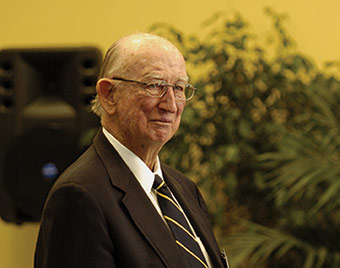
Photo by Aimee Blodgett | USF News
In December 1954, as Sam Gibbons sipped coffee with fellow Hillsborough County state representative James Moody at Maas Brothers in downtown Tampa, few would have guessed that their meeting would eventually lead to Gibbons' label "Father of USF." The two men had met to look over materials for the upcoming legislative session. In particular, they were concerned about higher education in the state. At the time, just three state universities — the University of Florida in Gainesville and Florida State University and Florida Agricultural & Mechanical University in Tallahassee — served the needs of a combined 36,000 students from Pensacola to Key West. The Florida Board of Control, which oversaw higher education in the state at the time, projected a 350 percent increase in enrollment over the next 20 years. The state needed an expanded system of community colleges and universities near population centers. Gibbons wanted a university in the Tampa Bay area.
Gibbons' life mirrored that of so many other Floridians seeking higher education following the end of World War II. A D-Day paratrooper, he graduated law school in 1947, became a state legislator in 1953, and worried about meeting the state's growing education needs. As chairman of both the House Education and Higher Education Appropriations committees, he found himself in a political position to do something about it.
While sitting at his kitchen table one evening in early 1955, Gibbons drafted a simple, 80-word bill to create a state university in Hillsborough County. His friend John F. Germany remembered it as one of Tallahassee's shortest pieces of legislation. The bill read: "The State Board of Education is hereby authorized to establish a State University or a branch of an existing State University in Hillsborough County. Said Board is hereby directed to have a study made as to the feasibility of such action. The Board of Control and the State Board of Education are hereby authorized to enter into all contracts necessary to carry out the provisions of this act." With little discussion, the legislature passed House Bill 1007, and Governor LeRoy Collins signed it into law on June 18, 1955.
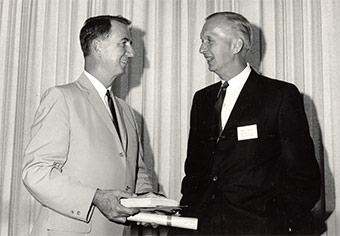
Elected in 1962, Gibbons never lost an election and was among the Tampa Bay region's best-known politicians. He is considered the "father" of the University of South Florida for pushing through legislation to create the school while serving in the Florida Legislature in the 1950s. Gibbons, who represented Tampa in Congress for more than three decades, with USF's first president, John Allen, in 1967.
Photo courtesy USF Special Collections
Gibbons recounted in a November 1985 oral history interview the long and difficult process to select the new university's location. Plans for a Schlitz brewery at the old Henderson Air Field just south of the proposed Fowler Avenue location angered some citizens, who complained its presence would corrupt future university students. In Tallahassee, he worked closely with Tampa's Chamber of Commerce. The chamber developed a booklet on the need for a university in Hillsborough County. Purposefully too big to fit in a filing cabinet and too eye catching to ignore, the public relations piece graced many legislators' desks and thus garnered a lot of attention.
"Luck and the Almighty were with us on a few occasions during the search for a site," he remembered. When officials arrived in October 1956 to survey two locations under consideration, they encountered floods of seawater from a recent rainstorm. "Take us to the high ground," officials implored. "The Temple Terrace site looked real good to these men on that day." In good measure to his tireless efforts, a resolution to create a state university on the Fowler Avenue property passed unanimously on Dec. 17, 1956. The Florida cabinet approved the measure the following day.
But what about a name for the new university? In October 1957, Governor Collins suggested University of Florida at Temple Terrace or Florida Temple Terrace University. The Tampa Tribune strongly opposed the governor's suggestion and instead recommended the University of South Florida. Gibbons liked the suggestion. "I wanted a name that had a lot of geographic significance to it because I had to get the money from the legislature. I just decided that everything south of Gainesville was South Florida!"
Gibbons played other important leadership roles during USF's early history, including the appointment of President John Allen in 1957 and securing much needed financial support for the rapidly growing university.
"I knew [Allen] was so competent, such a fine educator and gentleman, that he would add dignity as well as experience [and] technical knowledge," Gibbons later recalled. To fulfill the education dreams of future students, Gibbons and John Germany formed the USF Foundation to solicit community support for financial needs not covered through state dollars. Gibbons served as its first president, where he began the inaugural fund drive: "Dollars for Dorms." When USF faced challenges in Tallahassee, he could be counted on to help. In June 1961, 500 students signed a petition: "USF needs funds urgently. We the students are counting on you. Don't let us down," they pleaded. The next year Gibbons played an instrumental role in securing funds to hire new faculty.
His support did not end when he became a U.S. Congressman in 1963. He was responsible for locating a new VA hospital on 30th Street across from the campus and happily attended its grand opening in 1972. He came to campus often to speak on current affairs, dedicate new buildings, and celebrate accomplishments. At USF's Silver Anniversary in 1985, he told a crowd of nearly 1,000 people, "None of us ever dreamed we'd have a university this large or this successful. I think our goal now should be to serve the world."
His reach already extended worldwide. In Congress for 17 consecutive terms, Gibbons amassed an impressive record, supporting the Voting Rights Act of 1965, the War on Poverty, and efforts to expand U.S. trade abroad. In June 1994 he rose to one of the most influential leadership positions in the U.S. House when he became chair of the powerful Ways and Means Committee.
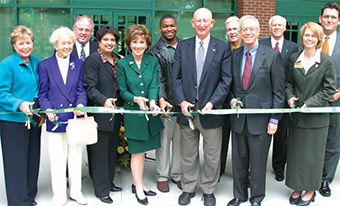
Gibbons helps cut the ribbon at the Sam and Martha Gibbons Alumni Center at USF.
Photo courtesy USF Special Collections
When the Republican Party won control of both houses of Congress later that year, Gibbons lost his chairmanship. He stayed on for one more term but retired in 1996 having never lost an election. For the remainder of his professional life, he worked with his son Cliff to offer advice and to advocate on a wide range of public policy and international trade law issues. Declining health slowed him down some, but he remained in great spirits and with a superb memory when he celebrated his 90th birthday at a public event sponsored by the Tampa Bay History Center and USF Libraries Florida Studies Center. Gibbons went on to enjoy two more happy birthdays before passing away peacefully in his sleep on Oct. 10, 2012.
Gibbons' legacy as the "Father of USF" lives on. In 1996, USF broke ground on the Sam and Martha Gibbons Alumni Center, and the following year he donated his extensive collection of political papers to the USF Tampa Library Special Collections Department. The collection also includes recorded interviews with Gibbons, in which he recounts firsthand his fascinating personal story and instrumental role in establishing the University of South Florida.
For more information about Gibbons' life and USF legacy visit http://bit.ly/gibbonsusf.
-

A 1958 billboard on Fowler Avenue announces the start of classes in September 1960.
Photo courtesy USF Special Collections -

Gibbons was born in Tampa in 1920.
Photo courtesy USF Special Collections -

Gibbons, with President John F. Kennedy, during Kennedy's 1963 visit to Tampa.
Photo courtesy USF Special Collections -
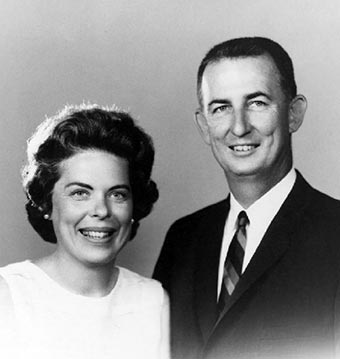
Gibbons married debutante Martha Hanley in 1946. They were married for 57 years until her death in 2003.
Photo courtesy USF Special Collections -

Gibbons was integral to developing the Tampa Bay region.
Photo courtesy USF Special Collections -

Gibbons, surrounded by Tampa Bay Buccaneers cheerleaders, served as Grand Marshall of the 1985 Homecoming Parade.
Photo courtesy USF Special Collections -
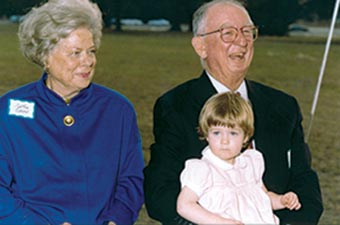
Gibbons, wife Martha and their granddaughter in 2002.
Photo courtesy USF Special Collections -
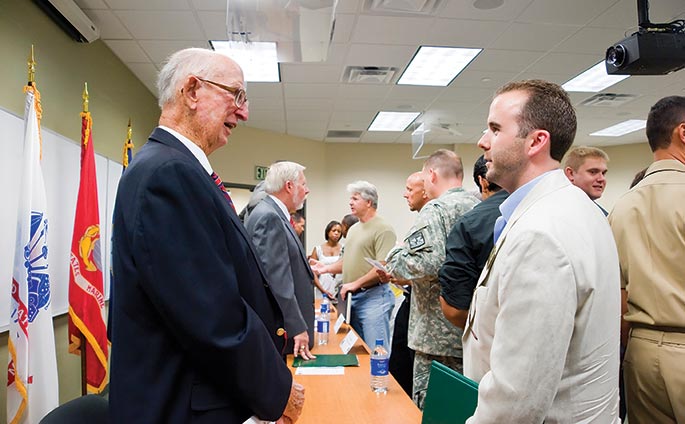
Gibbons at an event focused on benefits of the GI Bill in August 2009. A WWII veteran, Gibbons attended college on the GI Bill.
Photo courtesy USF Special Collections -
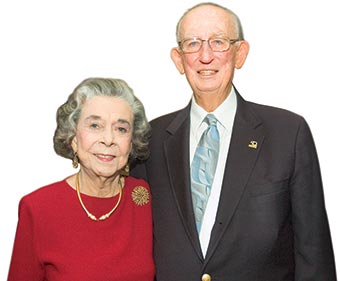
After Martha died in 2003, Gibbons married widow and high school classmate Betty King Culbreath. They are pictured here at the USF 50th Anniversary Gala, Dec. 2, 2006.
Photo courtesy USF Special Collections